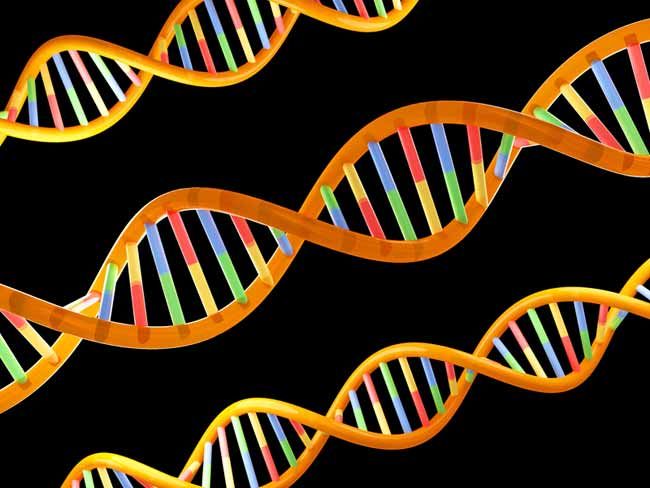New Research Reveals How DNA Could Power Computers

Engineers have long dreamed of using DNA as the backbone for the next generation of computer circuits. New research shows just how it might be done.
Instead of conventional circuits built of silicon that use electrical current, computer engineers could take advantage of the unique properties of DNA, the double-helix molecule that carries life’s information.
“Conventional technology has reached its physical limits," said Chris Dwyer, assistant professor of electrical and computer engineering at Duke University's Pratt School of Engineering.
Dwyer recently demonstrated that by simply mixing customized snippets of DNA and other molecules, he could create billions of identical, tiny, waffle-looking structures.
These nanostructures can then be used as the building blocks for a variety of circuit-based applications, ranging from the biomedical to the computational.
Key to the promise of these DNA nanostructures is an ability to rapidly "switch" between zeros or ones – the basic on/off binary action that powers computation. Light can be used to stimulate similar binary responses from DNA-based switches, though at a much faster rate than in silicon.
“When light is shined on the chromophores" – parts of DNA responsible for its color – "they absorb it, exciting the electrons,” Dwyer said. “The energy released passes to a different type of chromophore nearby that absorbs the energy and then emits light of a different wavelength. That difference means this output light can be easily differentiated from the input light, using a detector.”
Sign up for the Live Science daily newsletter now
Get the world’s most fascinating discoveries delivered straight to your inbox.
Dwyer added: "This is the first demonstration of such an active and rapid processing and sensing capacity at the molecular level."
Building computers with life's building blocks
With this bio-based system, Dwyer believes that logic circuits at the heart of computers can be produced inexpensively in almost limitless quantities. In a single day, the reasoning goes, a solitary grad student at a lab bench could produce more simple logic circuits than the world’s entire output of silicon chips in a month.
DNA is a well-understood molecule made up of pairs of complimentary nucleotide bases that have an affinity for each other. Customized snippets of DNA can cheaply be synthesized by putting the pairs in any order.
In their experiments, the researchers exploited DNA’s natural ability to latch onto corresponding and specific areas of other DNA snippets.
Dwyer used a jigsaw puzzle analogy to describe the process of what happens when all the waffle ingredients are mixed together in a container.
“It’s like taking pieces of a puzzle, throwing them in a box and as you shake the box, the pieces gradually find their neighbors to form the puzzle,” he said. “What we did was to take billions of these puzzle pieces, throwing them together, to form billions of copies of the same puzzle.”
In the recent experiments, the waffle puzzle had 16 pieces, with the chromophores located atop the waffle’s ridges. More complex circuits can be created by building structures composed of many of these small components, or by building larger waffles.
In addition to their use in computing, Dwyer said that since these nanostructures are basically sensors, many biomedical applications are possible. Tiny nanostructures could be built that could respond to different proteins that are markers for disease in a single drop of blood.
A study describing the results was published last month in the journal Small.
• Life-Like Computers Would Crash Less, Study Shows • Molecular Computer Mimics Human Brain • 10 Profound Innovations Ahead












